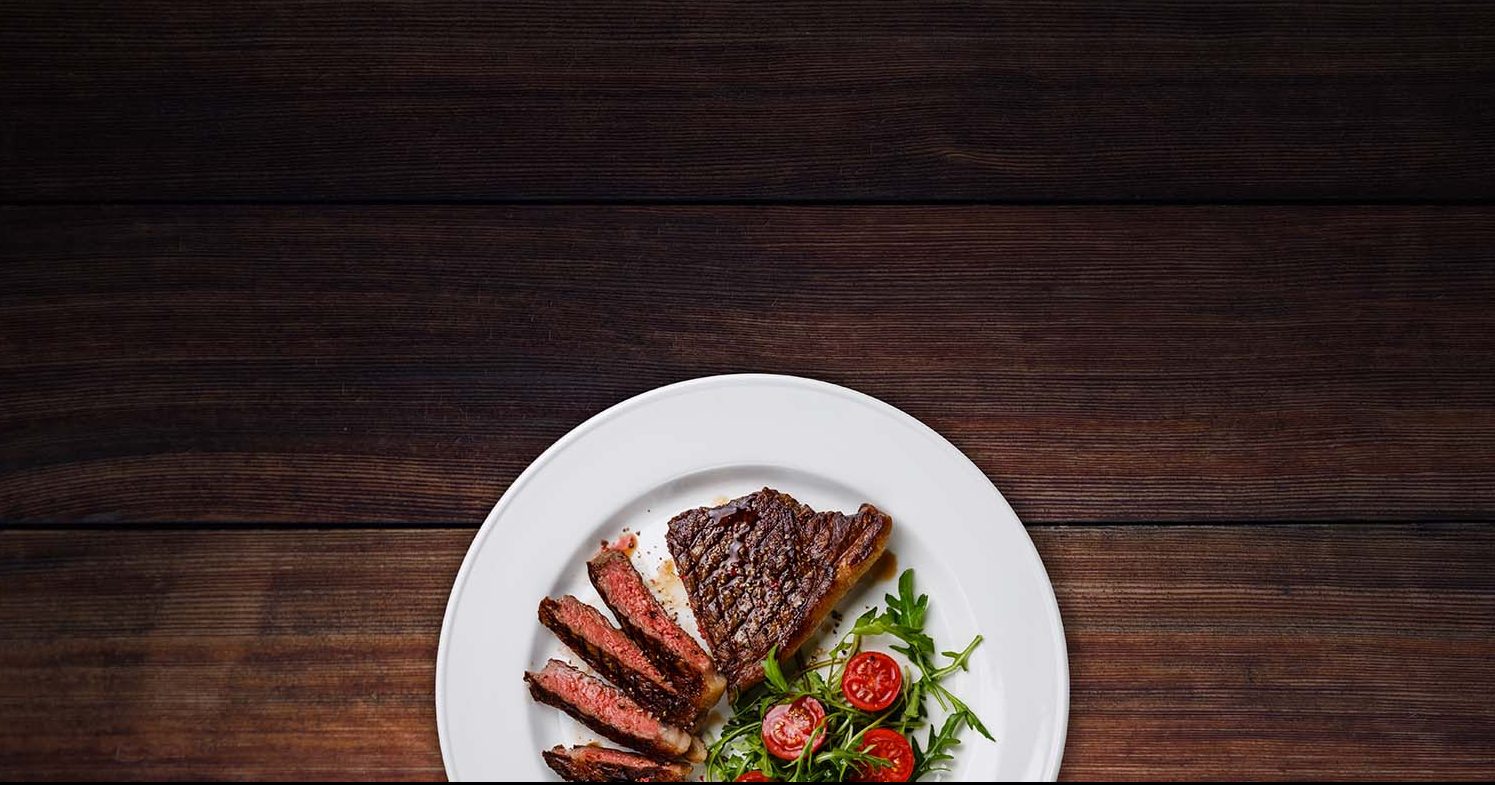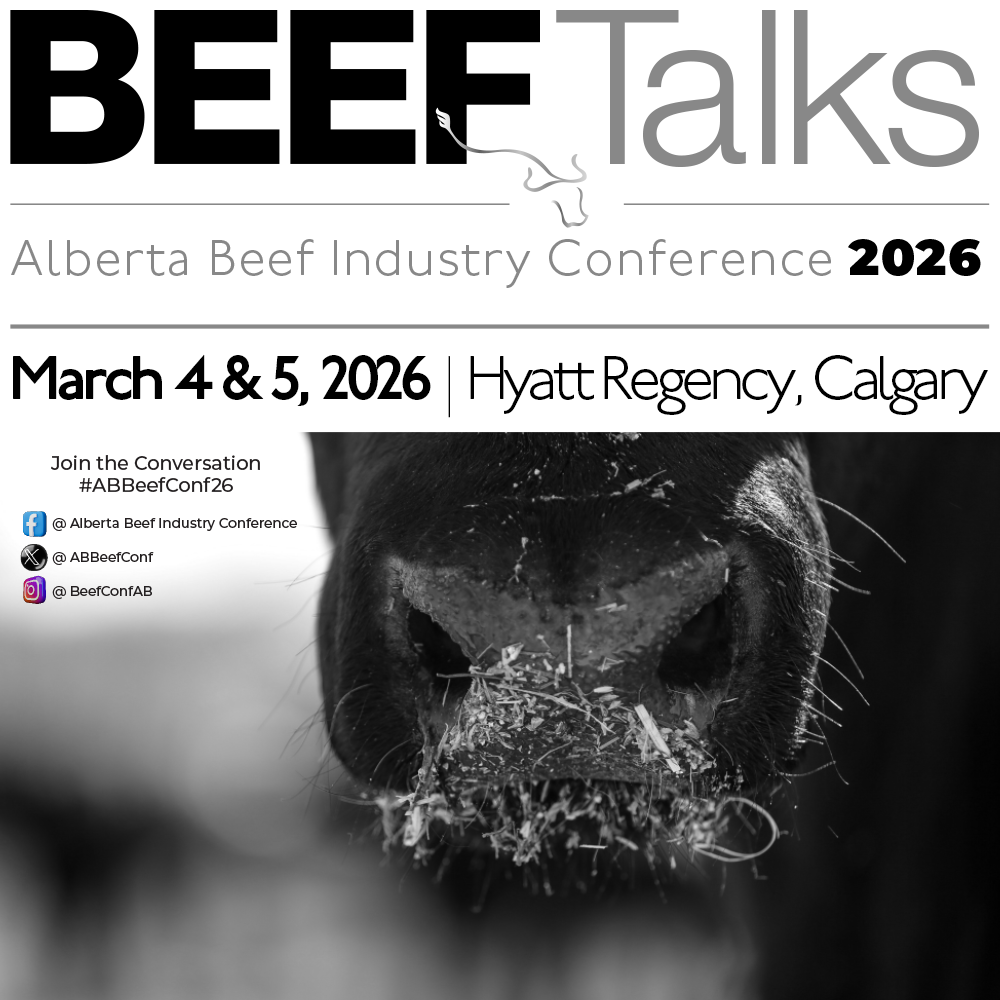AB Direct - Steers
Rail: 495.00 del
AB Direct - Heifers
Rail: 495.00 del
US Trade- Steers
Rail: 355.00-363.00 (IA, NE)
US Trade - Heifers
Rail: 355.00-363.00 (IA, NE)
Canadian Dollar
0.05

Invitation to a longer table with beef at the centre of the plate
At the heart of every beef operation is her people. Those passionate and committed persons who strive to produce the best possible food. Behind the hard-working cow calf, yearling, backgrounding and cattle-feeding operators, are families and teams of employees, scientists, farmers, veterinarians and a multitude of service providers. Like most things in life, they are in integrated partnerships that are woven into the final product.
It takes a community of individuals with different values to raise and sell beef.
Everyone comes from a place of core values and beliefs making each farm, ranch and feed yard uniquely different. Some find their passion in the preservation of water, grasslands and increasing carbon sequestration, others in the advancement of genomics or product research while the neighboring farm looks to add value by cutting, curing or presenting beef differently. Each individually contributes to the best in beef while being connected. The soil nurtures the grass and grain that feeds the beef animal while the science and health behind both contribute to humane production and a safe product that performs well on the rail, on the shelf and on the plate.
However, it does not always go smoothly and the past two years have presented their own set of challenges. There was a tremendous amount of bend in the beef production, feeding and processing industries and though the system did not break, it did become transparent. We “saw” the packing plant employee, the clogging at port, the delay in digitized systems, the fed cattle waiting in pens, the impact of food waste, the dry pastures, food insecurity and empty retail shelves. One of the outcomes of these events was an appreciation of beef in a very complex food system.
Marketing with a focus on health and welfare

To ensure beef remains available in such a complex system, the business of beef must continue to grow in the incubators of the prairies, paddocks and pens where creative thought and new ideas are nurtured by innovators and early adaptors that stretch the imagination and our comfort zone. They will spark the future and are key to attracting investment, labor and new entrants for they know how to align with the values of those they need in partnerships. It is through them and the relationships that they bring to the industry that we appreciate the diversity of markets and the complexity of the business of beef.
In other words, the future in the beef industry is not about doing the same things better. The future of the beef industry rests in understanding it as an integrated system and in the capacity to form new relationships, to embrace technology, non traditional markets, and a wide variety of stakeholders at each stage in the value chain.
The value chain – where worth is added and shared from the product at each stage, depends on the recognition of those connections. And while we look to research or retail to bridge production and sales of beef, the outcome could be determined by another element altogether. The award-winning film Guardians of the Grasslands, has impacted consumer perception of the role of cattle as regenerative contributors in a frail environment and influenced federal policy in a shorter period of time than research or advertising ever historically has.
Consumer trends through the pandemic
Keeping beef centre of plate does not require changing the plate – it requires a longer table that invites diversity and presents a cross cultural product which is relatable while also having attributes of being transportable, storable, easy to prepare and reflects the evolving environment and tastes of people. Understanding and developing that can be channeled through science and technology or by directly connecting on shared values – such as the environment.
Beef is not produced nor processed as it once was – nor can it be sold or presented as it was in the past century, decade or quarter. Ever evolving human and animal health, environmental welfare and product demand keeps the industry exciting and challenged.
Through it all in the past couple of years creative, imaginative, resilient producers, processors, cattle feeders, farmers, families and communities worked and wrangled their way through the challenges. Businesses and food systems were re-built on open communication and ever-present accountability. Many owners throughout the chain upskilled along with their teams, building comradery and advancing the business of beef. Shared personal, family and business values and vision linked teams together for a common cause.

It’s a good time to be in the business of beef. A time for aspirational leadership where the beef industry listens with intent to their families and to those outside the fence line who seek to be part of the solution. This is the time because the stakeholders in the beef industry are deeply connected through technology and the positive uptake by national media on agriculture has been historic. As the story continues to be shared, the supportive voices of the future may sound from ambassadors from any element of society and anywhere in the global village.
The intersection of self, family, community, environment, teams, partners, business, society, science and consumers all circle back to beef at the centre of plate. New partnerships and relationships, business models and research in the beef industry need to reflect the values of a variety of stakeholders. Building a longer table based on environmental, economic, societal and cultural cornerstones will continue to provide beef as a food of choice and to honor the heart of the industry – her people.
This article was first published in the November 2021 edition of ABP Magazine. Watch for more digital content from the magazine on ABP Daily.


